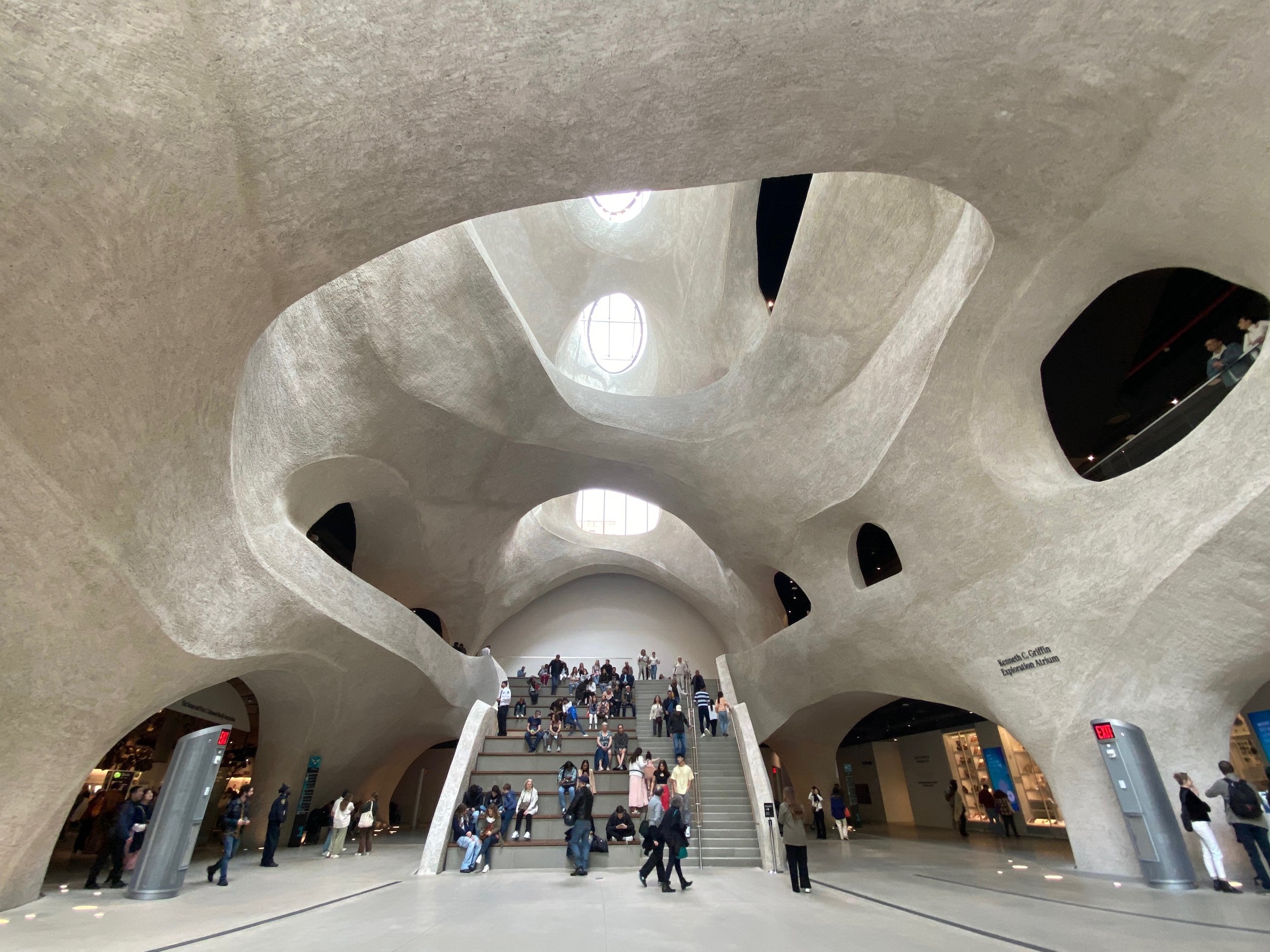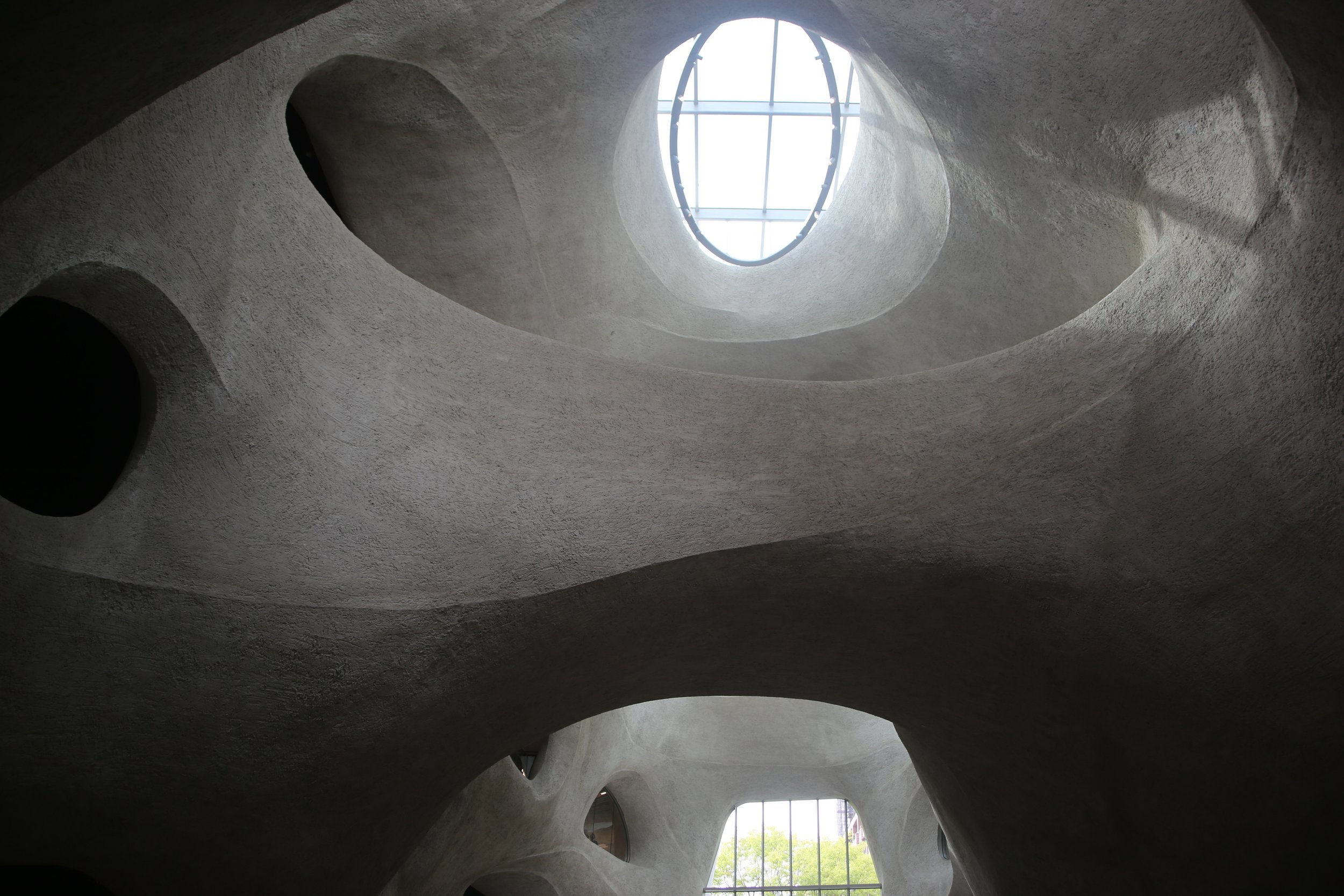Inside the Gilder Center: A Space as Marvelous as the World Around Us
Photography by Fox Carlson.
By Kate Mazade
What I wouldn’t give to film Shawn Levy's 2006 "Night at the Museum" now in the AMNH’s newly opened, airy atrium — just picture a miniature Owen Wilson repelling from a third-story bridge and a bloom of jellyfish floating from the fourth-floor opening toward a kaleidoscope of butterflies.
Photography by Fox Carlson.
Chicago-based firm Studio Gang, led by Harvard Graduate School professor Jeanne Gang, completed a cavernous, 230,000-square foot expansion and renovation of the American Museum of Natural History in New York City that is as unbelievable as the museum's discoveries.
The $465 million Richard Gilder Center for Science, Education, and Innovation opened at the beginning of May, aweing design pilgrims and museum visitors with its five-story, conical atrium.
Since opening in 1877, the 77th Street institution has grown to comprise 25 buildings, some connected by corridors and others resulting in frustrating dead ends. The Gilder Center reconnects 10 of those buildings through the construction of the Kenneth C. Griffin Exploration Atrium, collection storage, an insectarium, butterfly vivarium, exhibits, research library, classrooms, and lab spaces.
Located opposite the ceremonial Central Park West steps, the museum's formal hallways and underlit dioramas give way to a vaulting, sculpted space. The rough, undulating surfaces were created with shotcrete — structural concrete sprayed onto bent rebar cages — and swell to form openings, passageways, and bridges. A bleacher-style seating space and staircase descends to the ground level, from which visitors can gawk up at the oval skylights.
The sublime atrium empties toward Columbus Avenue through a black-framed curtain wall. As the concrete passes through the glazing, it transforms into rectangular plates of Milford pink granite — the same stone as the Central Park West entrance — that jaunt diagonally across the bubbled façade. Rounded windows are set deep into the face of the building in vertical bands of bird-safe, fritted glass and look out to Theodore Roosevelt Park, 85,000 square feet of which is under renovation by Reed Hilderbrand.
Photography by Fox Carlson.
"The architecture taps into the desire for exploration and discovery that is so emblematic of science and also such a big part of being human," Gang said. "When you step into the Gilder Center, you immediately feel a sense of wonder."
That wonderment is underlined by the sheer size of the space, which would be compounded if seen from a child's vantage point. The Gilder Center prompts a youthful captivation akin to standing at the foot of an African elephant, revering its height and unfamiliarity.
The space feels organic and authentic, despite its undeniable computational design. As if the tides of the Hall of Ocean Life have rushed through a mountain of rock, the cavern is as real and natural as visitors believe it to be. The arguably over-expensive form is pragmatic in that sense — if we believe in the incredulity and beauty of the natural world, why shouldn't we be beguiled by the advancements of technology or by what they can represent? The museum's 94-foot long blue whale is fiberglass, and yet we stare at it as if its tail will move any second.
Studio Gang's Gilder Center turns museum visitors into 19th century naturalists and makes discovery feel possible again.


